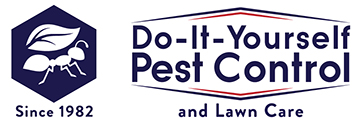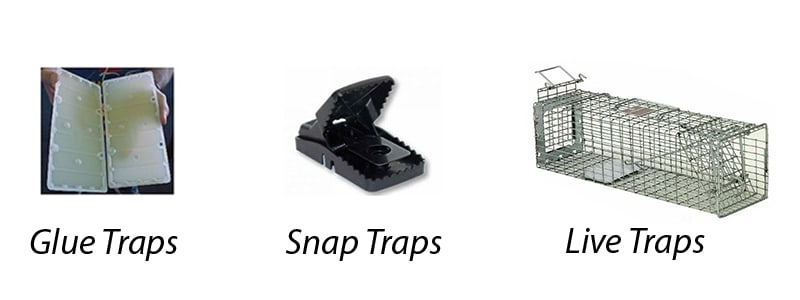
How to Get Rid of Rats in Your Home: Rat Traps
If you have problems with rats in your home, use this guide to learn how to get rid of rats in your home and the best rat traps to use.
December 16th, 2023
Number One Tip: Use Plenty of Rat Traps
The top rule for getting rid of rats in your home is to use plenty of traps. You may need more traps than you think is warranted when trapping rats. Usually, the rat population is larger than expected. Make sure that you are catching rats and not mice.
A typical mousetrap is not big enough to trap and kill rats. We will review the best rat traps to use for rat control in and around your home. Some of the best types of traps to get rid of rats in your home include:
Some of the best things to bait your rat traps with include peanut butter, unsalted seeds or nuts, bananas, apples, cake icing, and raw uncooked meat like bacon, hotdogs, or raw chicken.
We carry several professional lures that combine food-grade materials with no peanuts.
Rats will show adverse trap behavior since rats are naturally suspicious of new objects and surroundings. Pre-bait the traps without setting the traps to encourage the rats to the traps.
Trap Placement for a Rat Infestation
Where do you place traps to get rid of rats in your home? Place rat traps in high-activity areas of the rat colony.
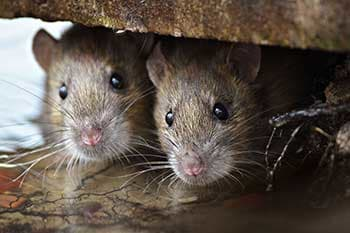
These areas may include darkened corners, along walls, behind appliances and objects, and all areas where droppings are evident. Since rats need to touch surfaces as they move, place them accordingly.
Place rat traps spaced from 15-20 feet apart. Remember to place them touching a wall since rats like to run along walls to avoid detection.
Looking for rat droppings and placing rait traps near these areas will likely help you catch rats along their usual routes. You may find evidence of a rat problem by finding grease marks along walls they frequently travel.
Since rats prefer enclosed, safe locations, use Protecta Bait Stations with the T-Rex Snap Traps. These stations will shelter the rat, encouraging it to enter, as well as protect non-targeted animals and children from the snap trap's harm.
The Victor Snap Traps are fine traps, but their height will not fit into bait stations. If this is the case, you can get a cardboard box, cut holes in it, and place it over the Victor Snap Trap to get rid of rats in your home.
The cardboard box method is not tamper-resistant like the Protecta Ambush Station.
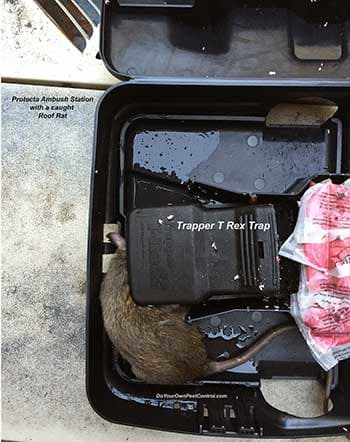
Rat Trapping Tips for Getting Rid of Rats in Your Home
Rats are often shy of new objects. The placement of unset traps in a new location for a week or two will increase your opportunities for getting rid of rats in your home. To have success in trapping rats, you need to know where to place them:
-
Position rat traps to maximize rats' chances to cross over the traps during their natural travels along their runways.
-
Set snap traps extended at a right angle from a wall with the trigger end almost touching the wall.
-
If rat traps are set parallel to the wall, set them in pairs with triggers situated to intercept the rats from either direction. Rats have poor eyesight so they will prefer to stay along walls to navigate.
-
To trap Roof Rats, set traps on tree limbs, under vegetation on a backyard fence or trellis, or other aboveground locations roof rats are known to frequent. Fasten the traps with wire to overhead pipes, rafters, and beams.
-
Set out unset rat traps buried in grain, sawdust, or similar materials within an empty cardboard box or pie pan. Place the rat bait in small pieces near it and above it with the hidden trap below.
-
Once the rats start taking the bait, set the traps. This arrangement will acclimate the rats to the traps.
-
Do not touch pets before handling the traps. The scent of your pet will scare away rats approaching the trap.
-
Avoid handling dead rodents with bare hands when performing rat removal to prevent contact with ectoparasites or diseased animals.
Mass Trapping
Once adapted, set enough traps to kill a large percentage of the population before the rodents become "trap shy". This method is called mass trapping, which means catching them at a higher rate than they can repopulate and become shy of the trap.
There may be a need to have as many as 2-3 dozen rat traps set in a commercial establishment in an infested trash room.
By having these rat traps baited with Provoke Rat Attractant, Pro-Pest Professional Lures, or peanut butter in unset traps, a large population will become used to feeding around the traps. Later, when the rat traps are simultaneously set after a while of this "feeding," a large kill can be obtained.
Use Baits to Kill Rats Fast
Rodent baits (the strong single-feed baits) are more costly but will help you eliminate rats in your home fast. These rat poison-baited traps put much more pressure on the rodent population as they readily take the bait and die. This is one of the fastest ways to kill rats and stop a rat infestation.
Some Rats Are Cautious
Even after setting out the unset rat traps to encourage trapping results, you may still have rats that will not go into the snap traps.
There are alpha and beta rats in a rat population. The first rats to be caught in snap traps are the beta rats (inferior rats).
The superior alpha rats are much more cautious around the snap traps. At this point, use a live trap. Rodenticides (rat poison) may be another choice for you at this point.
Key Takeaway
Whether using snap traps or glue traps, place them in areas where rats feel comfortable enough to stop and investigate.
Rats feel vulnerable in the middle of a room. Placing a rat trap against walls and behind furniture will help you get rid of rats in your home.
Advantages of Using Rat Traps to Get Rid of Rats in Your Home
-
Poison rodent baits may be dangerous to children and pets. Trapping can be safer.
-
For smaller rat infestations, rat traps provide quick results.
-
Easier to locate the dead rat for easy disposal to avoid odors.
Disadvantages of Using Rat Traps Get Rid of Rats in Your Home
-
If the rat infestation is extensive and severe, trapping can be a very time-consuming and laborious way to get rid of rats in your home.
-
Trapping rat programs are not as cost-effective as rodent bait programs, particularly for controlling large rat populations.
-
Some rat traps, such as snap traps, can injure people, pets, children, or wildlife if they accidentally encounter the trap. It is advised to use a Trapper T Rex Snap Trap inside a secured bait station, like Protecta Bait Stations or Ambush Bait Station, as an alternate trapping solution.
-
Some rat traps, such as glue boards, are not considered humane.
When to Use a Rat Trap
-
Use rat traps when poison baits may pose a potential hazard to children, pets, or wildlife.
-
Use rat traps where rodent baits are not allowed due to the possibility of food contamination.
-
If you have a small infestation, use rat traps to get rid of rats in your home fast.
-
Use rat traps when rodents exhibit bait shyness.
-
Use rat traps when dead rats may create odors. Multiple dead rats pose a serious odor issue.
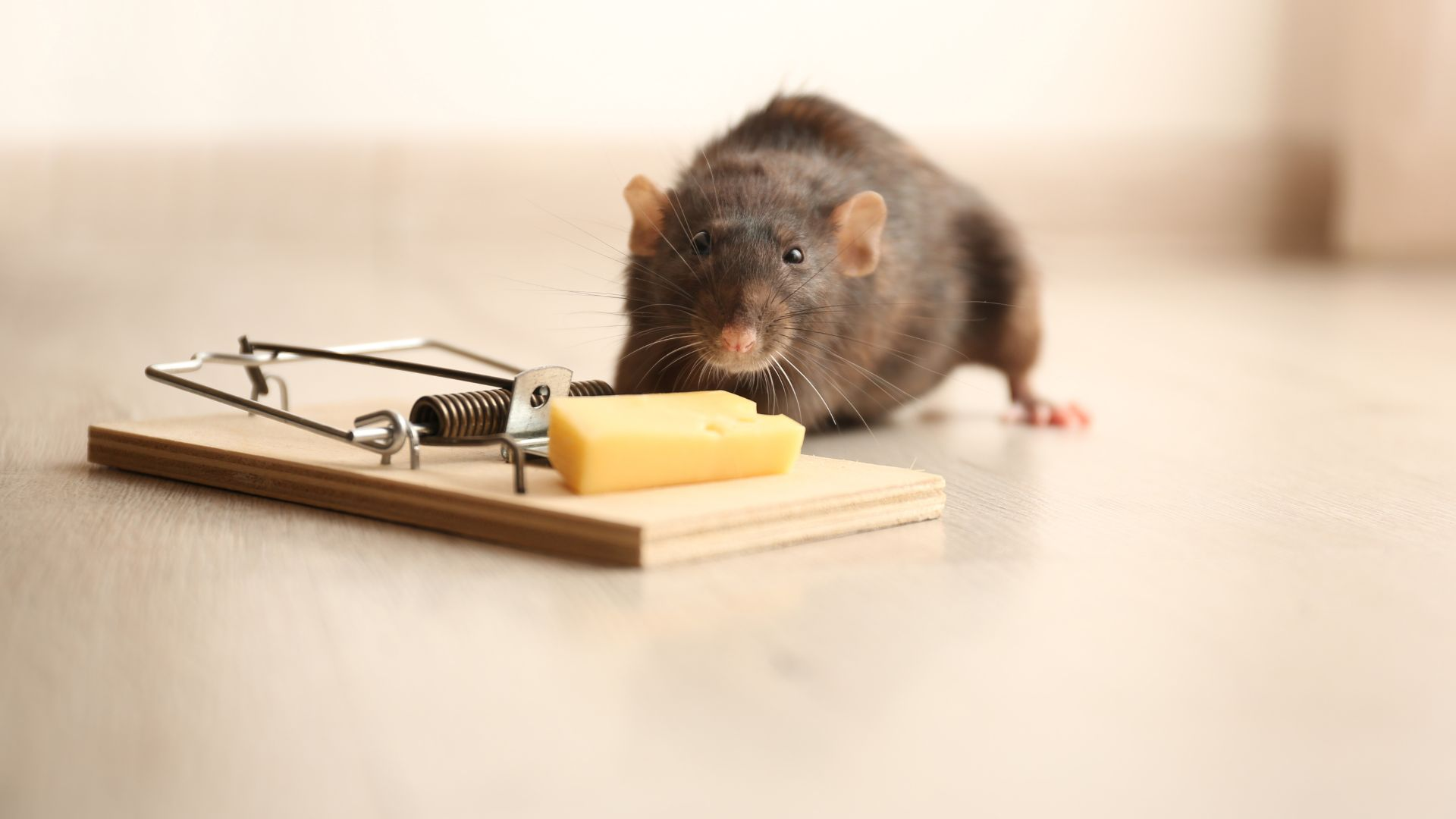
Types Of Rat Traps
1. Rat Snap Traps
Advantages:
These traps are relatively inexpensive and will instantly kill a rat, a fantastic method to get rid of rats in your home.
Improvements have been made over the years to the typical wooden snap trap. The T-Rex Trap is easier to set, more versatile, and one of the best rat traps on the market today.
Disadvantages:
The spring on the rat snap trap is powerful ( it could break a finger); keep it out of reach of your family pets and small children.
An alternate solution would be using the Trapper T Snap Traps with a protective bait station. The T Rex traps are designed to fit perfectly in the Protecta Bait Stations or Ambush Bait Stations.
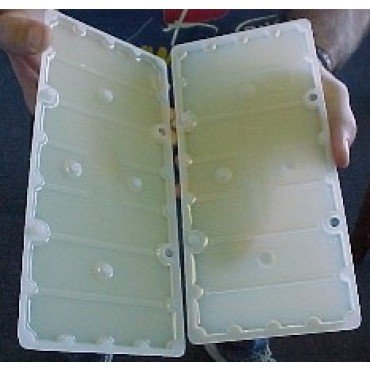
2. Rat Glue Traps
After inspecting the rat-infested areas, place the rat glue boards in those areas. Place the glue traps directly in their runways. Rats usually travel along baseboards and walls since they use the walls for guidance. Place glue traps where there has been rodent activity to get rid of rats in your home.
The Rat Glue Traps open like a book and, with its unique design, offers flexibility in placement.
The Trapper Tunnels that come in plastic or cardboard will cover and protect the glue from dirt and dust. It will also hide caught rodents from sight.
We carry Trapper Rat Glue Traps, Catchmaster Cold Temperature Rodent Traps, Trapper Plastic Tunnel, Trapper Cardboard Tunnels, Maxcatch Giant Glue Boards, and Trapper Glue to make your boards.
Where To Store Glue Boards
Avoid storing glue traps in vehicles during warm weather without placing them in a cooler. The glue will melt in hot weather. If glue gets on your pet's paw, coat it with vegetable oil. This oil will dissolve the glue.
Advantages:
Rat Glue Traps are safer to use than snap traps unless the snap traps are placed in protective rat bait stations.
Rats are less likely to become "trap shy." The glue boards have a lower profile, so the rat is less suspicious of the new object.
Less costly than snap traps.
Glue Traps can be used inside in a variety of places, this makes them a versatile option when attempting to get rid of rats in your home.
Disadvantages:
One disadvantage of glue traps is that they need to be kept in a dry and dust-free area.
They may be inhumane to the rat; the rat may not die immediately.
3. Live Animal Traps

Live traps are the most humane way of trapping rodents. If the sight or smell of dead rats bothers you, live traps are your best option. Bait it with peanut butter or Propest Professional Lure and carefully release it outside. Use gloves when handling the traps.
We carry the Safeguard Squirrel-Rat Live Trap #50450 and the Havahart #1025. Both these live traps will catch rats or squirrels.
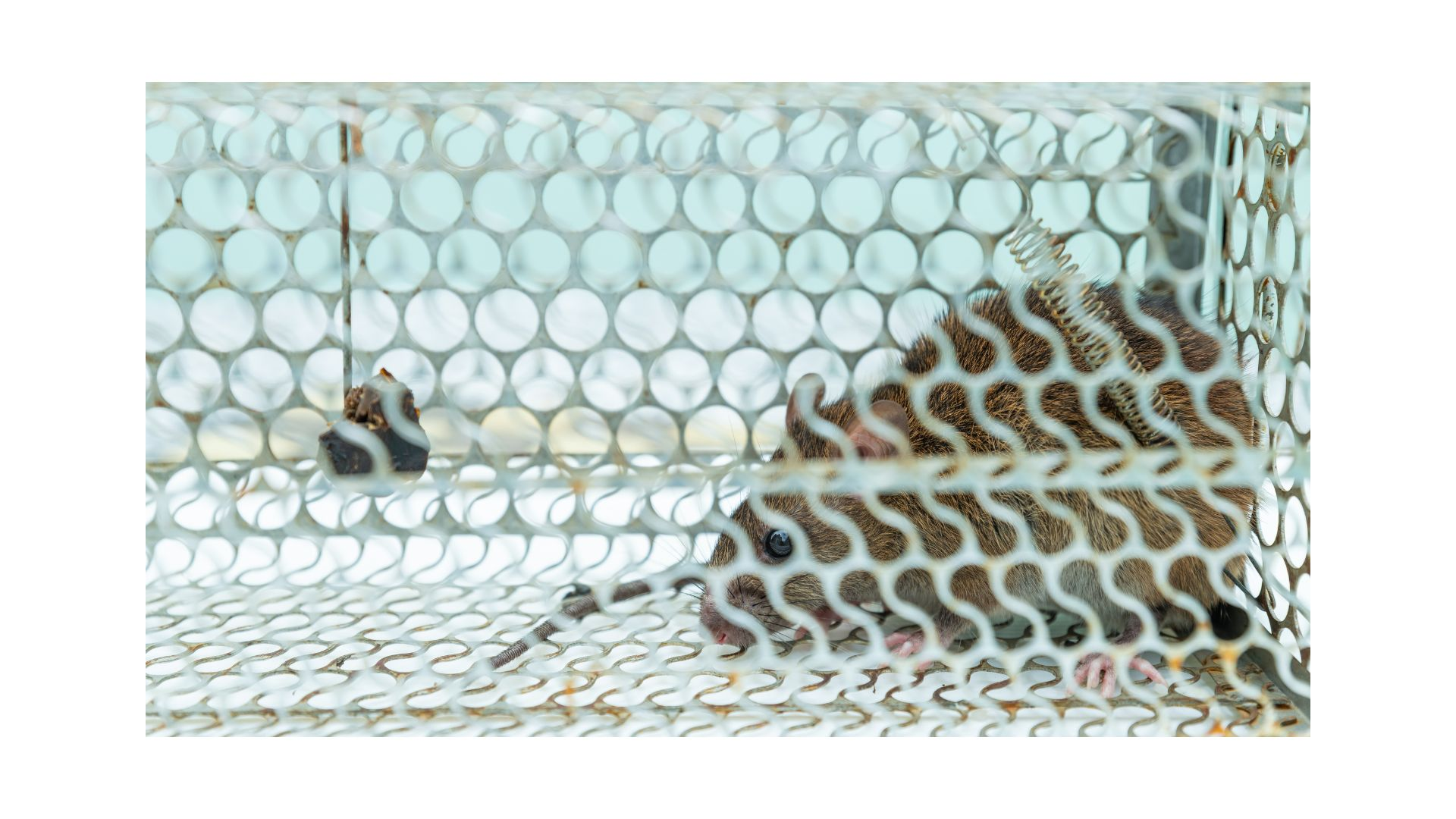
After Trapping the Rat
Wear gloves when disposing of the dead rat. Daily, check the traps and replace the traps if needed.
If you are concerned with any health threats from the dead rat, use a household disinfectant.
See tips on cleaning rodent traps and disposal of rodents.
Prevent Rats
Store Food Sources
When experiencing a rat problem, one of the first actions you want to take is storing pet food, such as dog food and cat food. While pet food is an easy source of rat problems, there is an almost endless list of food rats will eat to survive.
Block Entry Points
To prevent rats, you can do several things to stop them from entering and causing issues in your home. By blocking all potential entry points, you can repel rats without using any rat poisons, rat traps, or rat baits. Entry points can include chimneys, holes in the roof, attic vents, and plumbing and electrical access points.
If you suspect rat activity, knowing the type of rat species you are dealing with is crucial to forming an effective treatment and prevention program. The roof rat and brown rat are the main culprits in the United States when it comes to rat problems.
The roof rats are also known as sewer rats and black rats, while brown rats are commonly referred to as Norway rats. Both roof rats and Norway rats carry diseases that can cause serious illness in humans and domestic animals. These dangerous diseases include Salmonella, E. Coli, and over thirty other viral and bacterial infections.
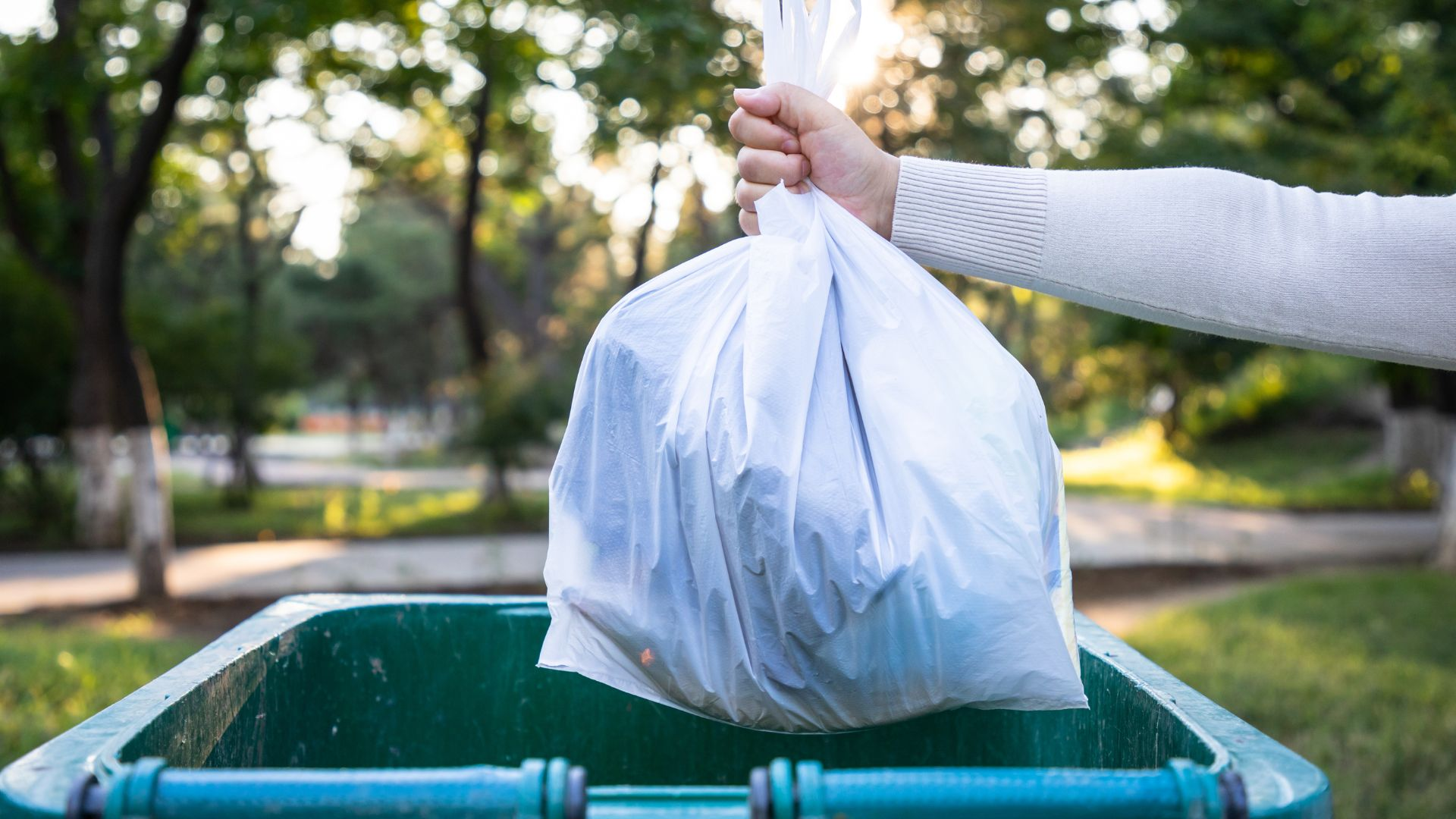
Keep Trash Sealed
One major source of a rodent problem is an outdoor trash can, as it can attract rats. Because black rats, the Norway rat, and other rats are not picky eaters, trash cans can provide food sources capable of sustaining large rodent populations.
When preventing and reducing rat populations, keep your trash cans sealed when not in use. Rat invasions can stem from when a few rats invade your outdoor trash cans.
Monitor Rat Activity Around Your Home's Exterior
Trim Tree Branches
Tree branches can be the cause of a rat infestation. Rats (usually roof rats) may climb from the branches of fruit trees onto your roof, which they then use to find a way into your attic. By trimming branches and tree limbs near your home, you can help eliminate rats from your home and its surroundings.
Norway Rats Are More Often Found Around Ground or Basement Level
The brown rat, or Norway rat, is more likely to enter the home through ground-level entry points. By sealing and covering any potential entries with caulk, mesh wire, steel wool, cement, or metal kick plates, you can eliminate rats from your home before they become a problem.
In all but the most serious cases, you can DIY your rat removal with the tips we have listed in this guide. Only in the case of a major rodent problem would you need to use a professional pest control company.
How to Get Rid of Rats in Your Home
If you have problems with rats in your home, use this guide to learn how to get rid of rats and the best traps to use.
Number One Tip: Use Plenty of Traps
The top rule for using any rat trap is to use plenty of traps. You may need more traps than you think is warranted when trapping rats. Usually, the rat population is larger than expected. Make sure that you are catching rats and not mice. A typical mouse trap is not big enough to catch rats. We will review the best rat traps to use for rat control in and around your home.
- Review these tips for the identification of guidelines. Use peanut butter, unsalted seeds or nuts, bananas, apples, cake icing, and raw uncooked meat like bacon or hotdogs, or raw chicken.
- We carry several professional lures that combine food-grade materials with no peanuts.
- Rats will show adverse trap behavior since rats are naturally suspicious of new objects and surroundings. Pre-bait the traps without setting the traps to encourage the rats to the traps.
Trap Placement
Place rat traps in high-activity areas of the rat colony. These areas may include darkened corners, along walls, behind appliances and objects, and all areas where droppings are evident. Since rats need to touch surfaces as they move, place them accordingly. Place rat traps spaced from 15-20 feet apart. Remember to place them touching a wall since rats like to run along walls to avoid detection.
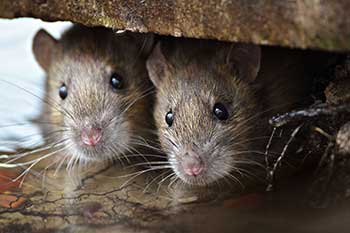

Since rats prefer enclosed, safe locations, use Protecta Bait Stations with the the T-Rex Snap Traps. These stations will shelter the rat, encouraging it to the T-Rex Snap Traps. These stations will shelter the rat, encouraging it to enter and protect non-targeted animals and children from the snap trap's harm.
The Victor Snap Traps are fine traps, but their height will not fit into bait stations. If this is the case, you can get a cardboard box, cut holes in it and place it over the Victor Snap Trap. The cardboard box method is not tamper-resistant like the Protecta Ambush Station.
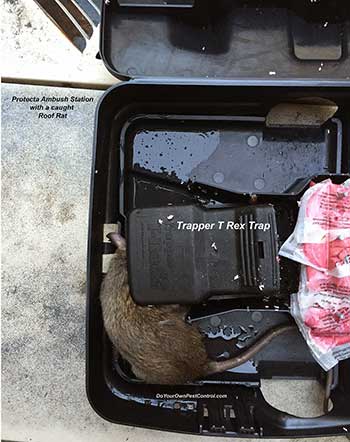

Rat Trapping Tips
- Position rat traps to maximize rats' chances to cross over the traps during their natural travels along their runways. Set snap traps extended at a right angle from a wall with the trigger end almost touching the wall. If rat traps are set parallel to the wall, set them in pairs with triggers situated to intercept the rats from either direction.
- To trap Roof Rats, set traps on tree limbs, under vegetation on a backyard fence or trellis, or other aboveground locations roof rats are known to frequent. Fasten the traps with wire to overhead pipes, rafters, and beams.
- Rats are often shy of new objects. The placement of unset traps in a new location for a week or two will increase the opportunities for catching.
- Set out unset rat traps buried in grain, sawdust, or similar materials within an empty cardboard box or pie pan. Place the rat bait in small pieces near it and above it with the hidden trap below. Once the rats start taking the bait, set the traps. This arrangement will acclimate the rats to the traps. Once adapted, set enough traps to kill a large percentage of the population before the rodents become " trap shy".
- This method is called mass trapping, catching them at a higher rate than they can repopulate and become shy of the trap.
- There may be a need to have as many as 2-3 dozen rat traps set in a commercial establishment in an infested trash room.
- By having these rat traps baited with Provoke Rat Attractant, Pro-Pest Professional Lures, or peanut butter in unset traps, a large population would be used to feeding on around the traps. When the rat traps are then simultaneously set after a while of this "feeding," a large kill can be obtained.
- Even after setting out the unset rat traps to encourage trapping results, you may still have rats that will not go into the snap traps. There are alpha and beta rats in a rat population. The first rats to be caught in snap traps are the beta rats (inferior rats). The superior alpha rats are much more cautious around the snap traps. At this point, use a live trap. Rodenticides may be another choice for you at this point. Rodent baits (the strong single feed baits) are more costly but will cause much more pressure on the rodent population as they readily take the bait and die.
- Do not touch pets before handling the traps.
- Avoid handling dead rodents with bare hands to prevent contact with ectoparasites or diseased animals.
Key Takeaway
Whether using snap traps or glue traps, place them in areas where rats feel comfortable enough to stop and investigate.
Rats feel vulnerable in the middle of a room. Placing traps against walls and behind furniture is a more successful strategy.
Advantages of Using Rat Traps
- Poison rodent baits may be dangerous to children and pets. Trapping can be safer.
- For smaller rat infestations, rat traps provide quick results.
- Easier to locate the dead rat for easy disposal to avoid odors.
Disadvantages of Using Rat Traps
- If the rat infestation is extensive and severe, trapping can be very time consuming and laborious.
- FTrapping rat programs are not as cost-effective as rodent bait programs, particularly for controlling large rat populations.
- Some rat traps, such as the snap traps, can injure people, pets, children, or wildlife if they accidentally encounter the trap. It is advised to use a Trapper T Rex Snap Trap inside a secured bait station, like Protecta Bait Stations or Ambush Bait Station, as an alternate trapping solution.
- Some rat traps, such as glue boards, are not considered humane.
Types Of Rat Traps

Rat Snap Traps
Advantages of Snap Traps
These traps are relatively inexpensive and will instantly kill a rat
Disadvantages of Snap Traps
The spring on the rat snap trap is powerful ( it could break a finger); keep it out of reach of your pets and small children.
An alternate solution would be using the Trapper T Snap Traps with a protective bait station. The T Rex traps are designed to fit perfectly in the Protecta Bait Stations or Ambush Bait Station.
Improvements have been made over the years from the typical wooden snap trap. The T-Rex Trap (pictured above) is easier to set and more versatile.
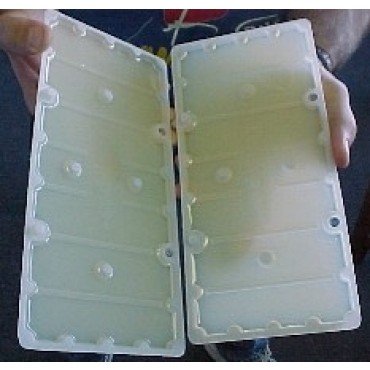
Rat Glue Traps
Advantages of Glue Traps
Rat Glue Traps are safer to use than snap traps unless the snap traps are placed in protective bait stations.
Rats are less likely to become "trap shy." The glue boards have a lower profile, so the rat is less suspicious of the new object.
Less costly than snap traps.
Glue Traps can be used inside in a variety of places.
Disadvantages of Glue Traps
One disadvantage of glue traps is that they need to be kept in a dry and dust-free area.
They may be inhumane to the rat; the rat may not die immediately.
How To Set Rat Glue Boards
After inspecting the rat-infested areas, place the rat glue boards in those areas. Place the glue traps directly in their runways. Rats usually travel along baseboards and walls since they use the walls for guidance. Place glue traps where there has been rodent activity.
We carry Trapper Rat Glue Traps, Catchmaster Cold Temperature Rodent Traps, Trapper Plastic Tunnel, Trapper Cardboard Tunnels, Maxcatch Giant Glue Boards, and Trapper Glue to make your boards.
The Rat Glue Books open like a book and, with its unique design, offers flexibility in placement.
The Trapper Tunnels that come in plastic or cardboard will cover and protect the glue from dirt and dust. It will also hide caught rodents from sight.
If glue gets on your pet's paw, coat it with vegetable oil. This oil will dissolve the glue.
Where To Store Glue Boards
Avoid storing glue traps in vehicles during warm weather without placing them in a cooler. The glue will melt in hot weather.
Live Animal Traps
Live traps are the most humane way of trapping rodents. Bait it with peanut butter or Propest Professional Lure and carefully release it outside. Use gloves when handling the traps.
We carry the Safeguard Squirrel-Rat Live Trap #50450-1 and the Havahart #1025. Both these live traps will catch rats or squirrels.
When to Use Rat Traps
- Use rat traps when poison baits may pose a potential hazard to children, pets, or wildlife.
- Use rat traps where rodent baits are not allowed due to the possibility of food contamination.
- Use rat traps when rodents exhibit bait shyness.
- Use rat traps when dead rodents may create odors.
After Trapping the Rat
- Wear gloves when disposing of the rat. Daily, check the traps and replace the traps if needed.
- If you are concerned with any health threats from the dead rodent, use a household disinfectant.
- See tips on cleaning rodent traps and disposal of rodents.
Written by our resident pest control expert Ken Martin.

